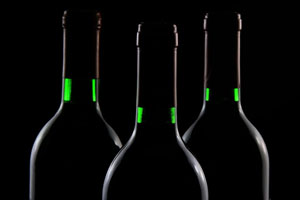Approximately 10-12% of healthcare professionals will develop an alcohol use disorder sometime during their career.
Alcohol Use & COVID-19: What to Know
At this time, little is known about whether there is a connection between the COVID-19 pandemic and increased risk of alcohol use for the general public or for healthcare workers specifically. But, by connecting what we do know about alcohol use, stress, and trauma, we may be able to take a proactive approach to alcohol use during COVID-19.
- Approximately 10-12% of healthcare professionals will develop an alcohol use disorder sometime during their career. This number may be higher because it can be especially difficult for healthcare professionals to report that they have a problem with alcohol, even anonymously.
- The stress of long shifts, losing patients, and burnout can lead to using alcohol to cope. The circumstances of COVID-19 may exacerbate this stress.
- Regardless of profession, exposure to potentially traumatic events such as human suffering or death is linked to increases in drinking. The COVID-19 pandemic has exposed healthcare workers to increased levels of traumatic stress. From research conducted during the SARS epidemic, it is known that healthcare workers on the frontlines had the highest levels of trauma exposure.
- Other circumstances associated with COVID-19, for all individuals regardless of profession, that are also known risk factors for drinking include isolation, financial stress, caregiving burden and stress, and fear, guilt, and uncertainty.
Self-Assessment of Alcohol Use
How much is “too much?”
If the questions in the assessment didn’t describe your concerns, there are other ways to describe what is and is not “moderate drinking.” According to the National “low-risk” alcohol use is defined as up to two drinks daily for healthy adult men and one drink daily for healthy adult women. It is important to note that this is the “upper limit” of low-risk drinking; it is possible to have adverse health impacts or problems with alcohol at lower levels for some individuals, particularly if you have other physical or mental health problems.
What does “one drink” really mean?
Tips for monitoring or changing drinking:
- Track your drinking: Monitor your drinking daily and weekly utilizing the definitions of “one drink” above, using a personal mobile breathalyzer such as BACtrack S80, or using an app to track your drinking: DrinkSmart, IntelliDrink, Drinkaware, DrinkControl, Drinks Meter, Drink Coach, Moderate Drinking App. Having objective information about your level of drinking will help you set goals, stay within your limits, and monitor for increases.
- Pace yourself using time, food, and water: Drink slowly and don’t have more than one drink per hour (especially in the first hour of drinking). Alternate alcoholic drinks with water. Make sure to eat something (including protein!) before you start drinking.
- Avoid drinking to cope: Drinking when you are emotionally upset is sometimes referred to as “self-medicating” and can lead to overdrinking.
- Consider interactions with prescription medications: Discuss the risks of drinking with your doctor for all prescription medications, over the counter medications, or supplements.
Resources for Support:
Find your way to high quality alcohol treatment:
No one cares alone (peer system for healthcare professionals looking for support):
SAMHSA’s National Helpline: 1-800-662-HELP (4357)
A free, confidential, 24/7 365 days a year treatment referral and information service in English and Spanish for individuals and families facing mental and/or substance use problems.

